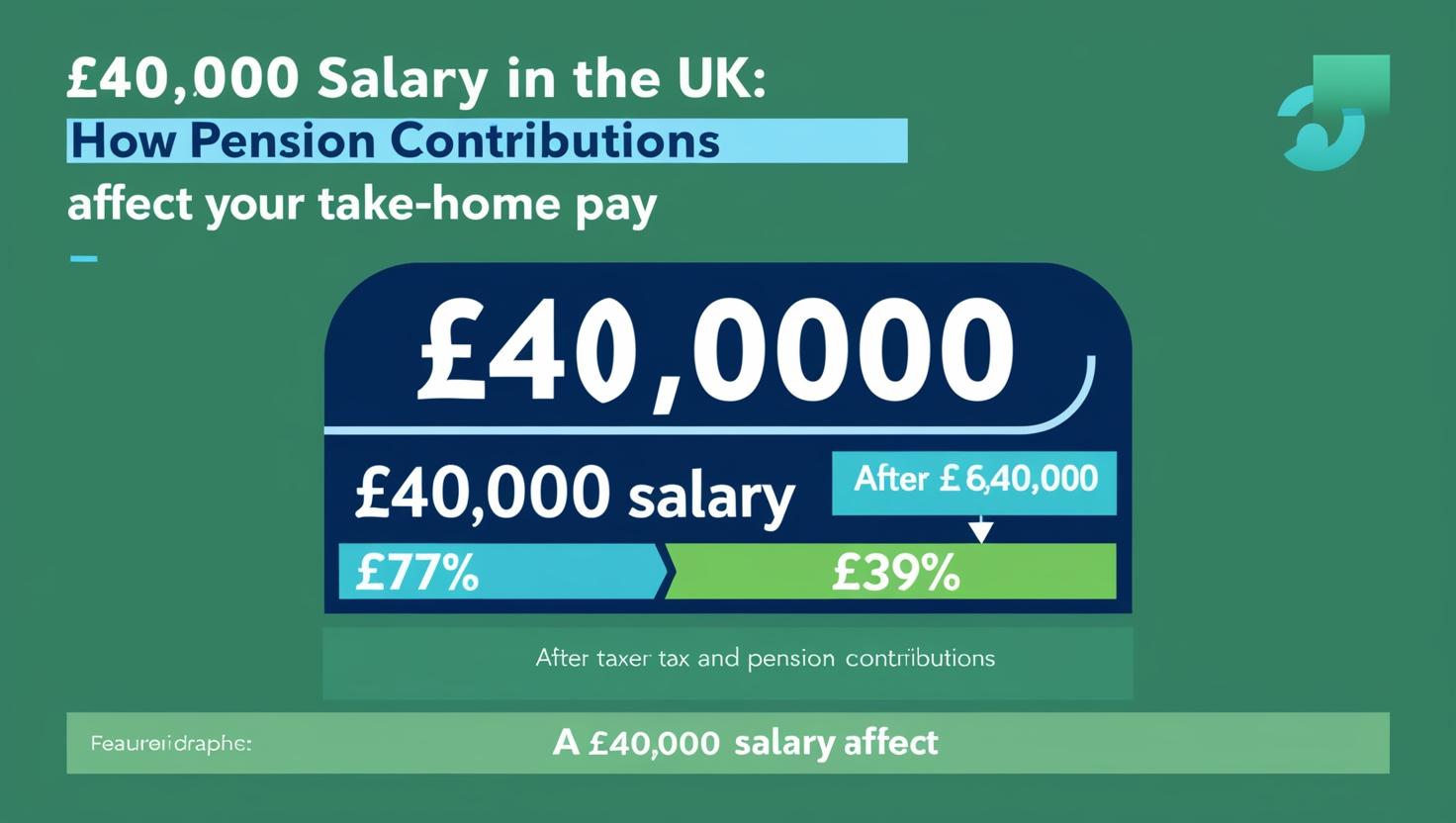
If you’re earning £40,000 a year in the UK, you might be wondering how different types of pension contributions impact your monthly take-home pay. With auto-enrolment now standard for most workers, and salary sacrifice and personal pension options on the table, it’s smart to understand the difference.
Let’s break it down.
UK Salary & Tax Breakdown Calculator
If you live in Scotland, income tax is calculated differently.
Rates and thresholds set by Scottish Government.
A common tax code is “1257L” meaning £12,570 tax-free allowance. Check your payslip, P60, or HMRC letter for your correct code.
• Plan 1: Started before September 2012 in England/Wales
• Plan 2: Started after September 2012 in England/Wales
• Plan 4: Scottish students
• Postgraduate Loan: For master’s/PhD courses
Your payslip or SLC account will confirm your plan.
1. Auto-Enrolment Pensions (The Default Option)
Most UK employees are now automatically enrolled into a workplace pension scheme. Here’s what that means:
- You contribute 5% of your qualifying earnings.
- Your employer adds another 3%.
For a salary of £40,000, “qualifying earnings” are between £6,240 and £50,270 (2025/26 thresholds). So, you’re only contributing based on a slice of your salary, not the full amount.
- Your contribution (5%): ~£220/month
- Employer contribution (3%): ~£132/month
This comes out of your post-tax pay, but you receive tax relief. So, while you see a deduction on your payslip, the real cost to your take-home is slightly lower than £220.
2. Salary Sacrifice Pension
Salary sacrifice is a tax-efficient way to contribute to your pension. Instead of taking money out after tax, you reduce your gross salary in exchange for pension contributions.
How this benefits you:
- You pay less income tax (because your salary is lower)
- You pay less National Insurance
- Your employer might pass on NI savings to your pension
If you sacrifice £220/month:
- Your gross salary becomes £37,360
- You save ~£70/month in tax and NI
- Your take-home pay only drops ~£150 instead of the full £220
It’s more efficient and often the best option if your employer supports it.
3. Personal Pensions (Non-Workplace)
If you pay into a personal pension directly (outside of your employer), contributions come from your net income. But the provider will claim 20% tax relief on your behalf. Higher earners can claim more through their tax return.
Example: You pay £220/month from your net salary.
- Your pension gets topped up to £275.
- But your take-home pay really does drop by the full £220 unless you reclaim higher-rate relief.
This option is flexible but less tax-efficient than salary sacrifice.
Which pension option is best for a £40k salary?
| Option | Monthly Contribution | Take-Home Reduction | Notes |
|---|---|---|---|
| Auto-Enrolment | ~£220 | ~£200 | Easy, standard, some tax relief |
| Salary Sacrifice | £220 | ~£150 | Most efficient, saves tax and NI |
| Personal Pension | £220 (net) | £220 | 20% relief added, more if you reclaim |
If you’re aiming to build long-term savings without sacrificing too much short-term income, salary sacrifice pensions tend to offer the best return. That said, even auto-enrolment is a solid starting point. Make sure to check with your employer what schemes they offer and whether they top up more than the minimum.
Want to see your take-home pay with and without pensions? Use our Salary Calculator to compare all three scenarios in seconds.

